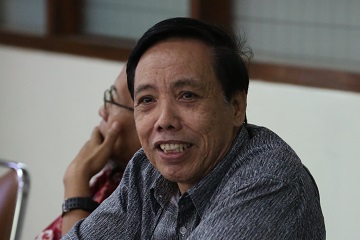Professor of IPB: Indirect Survey Was More Efficient Up To 80 Percent

Technological advances made the world even more united without barriers. Communication between countries was increasingly liquid. We would know the turmoil in a country that same moment.
In 1998, there was a wave of reform in Indonesia that brought about a big change. First, the shift from centralized to decentralized powers was dispersed. Second, the political system changed from a single majority to a multi-party system. Both changes had encouraged the growth of the data needed at the district, sub-district, and even village levels.
“Formerly the ones who corrupt are one or two people, now the corruption was by many people and spread out,” said Professor of Faculty of Mathematics and Natural Sciences (FMIPA), Bogor Agricultural University (IPB), Prof.Dr. Khairil Anwar Notodiputro in the press conference in the pre scientific oration in Campus of IPB Baranangsiang, Bogor (5/10).
According to him, formerly people needed the data only in the national and provincial levels. Now it could not be anymore. Meanwhile, a direct survey (up to the village level) required the tremendous effort. “The survey is not free and needs cost and takes time,” he said.
This problems could be solved by a small area estimation method (small area estimation – SAE). In contrast to the conventional methods based on the direct prediction, the method of SAE was the model-based and was an indirect assumption.
Prof. Khairil said that the method of SAE could improve the effectiveness and the efficiency of the resulting statistics, compared with the conventional method. The result of his research in Department of Statistics of FMIPA of IPB showed that the average efficiency that occurred by applying the model of SAE could reach 80 percent. The the direct method needed 100 samples, this indirect method only needed 20 samples which was enough. This meant extraordinary savings.
According to him, the governments in various countries like United States of America, Italy, the Netherlands, Canada already used this SAE method. This meant that there were an optimism in the use of SAE by the government to produce the effective and efficient statistics.
There was nothing wrong with the direct method. But it would be problematic if the number of examples was small and inadequate.
Under condition of the limited fund, time and energy, we were often unable to take samples of large or adequate quantities. For Central Bureau of Statistics (BPS), Ministry and State Institution, this method of SAE could be a solution, when APBN was getting limited while the data collection and statistical production could not be stopped to plan, monitor and evaluate the national development.(zul)



